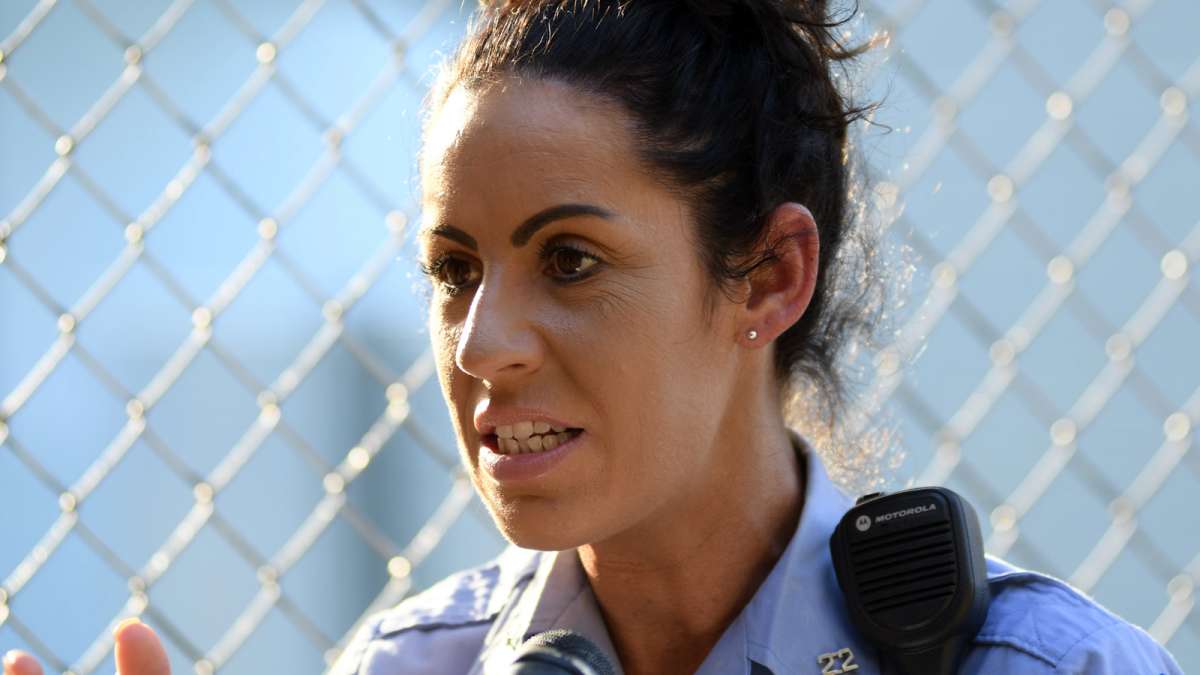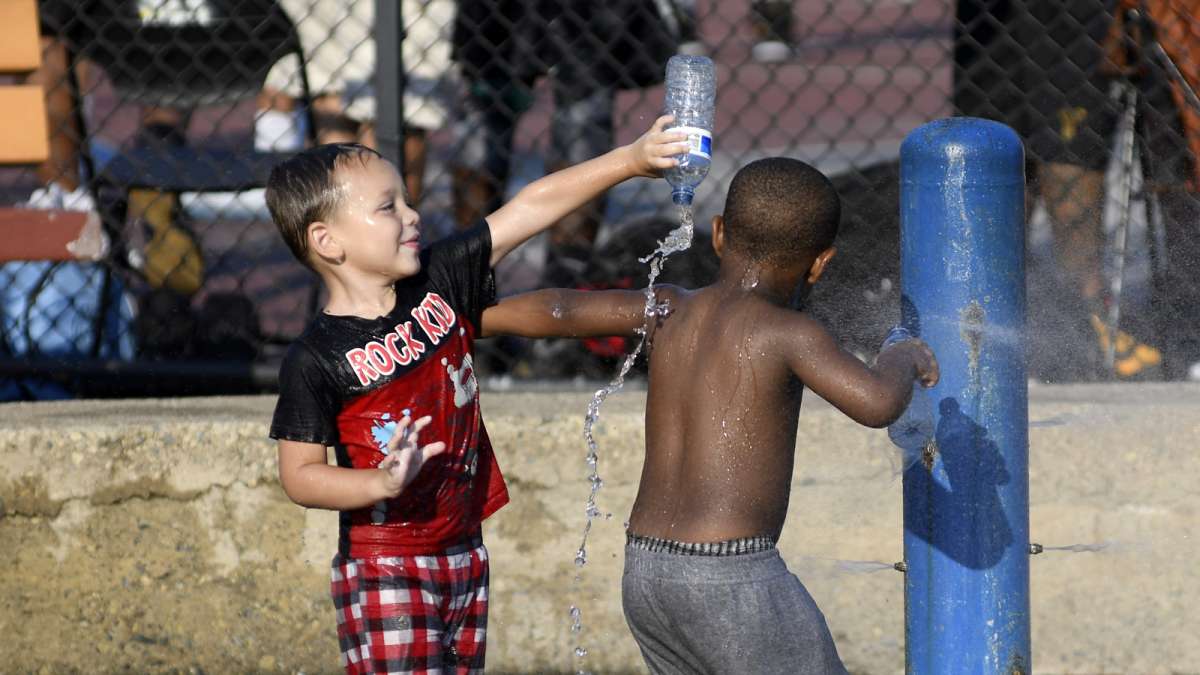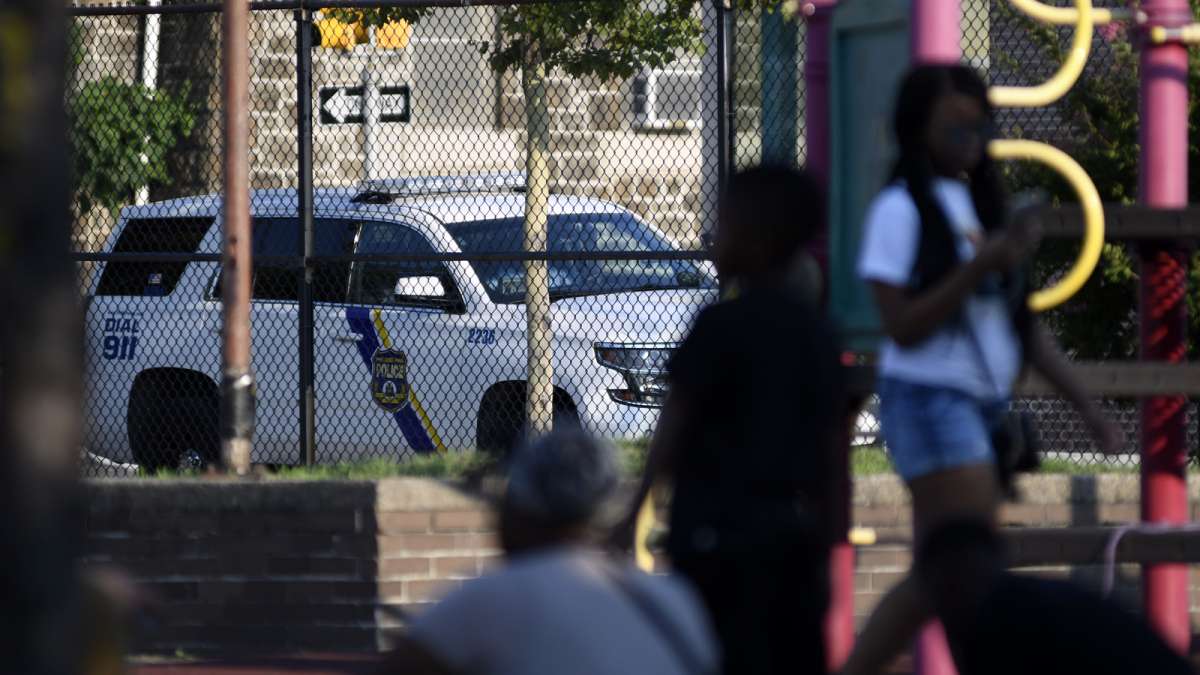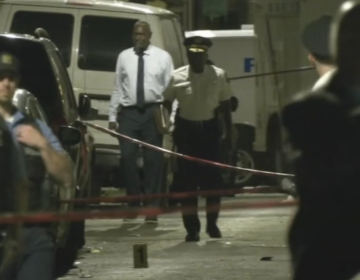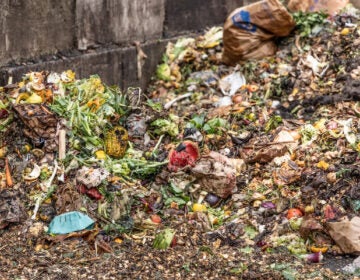The view on deadly violence from Philly’s 22nd District
ListenSeeing shootings first-hand and hearing constant gunfire, says 48-year-old Thomas Boyd, has become distressingly common in his Philadelphia neighborhood.
In recent months, Boyd, a part-time cook and North Philly native, saw the fatal shooting of a friend. He thinks the perpetrator was a neighborhood rival.
Standing at the Cecil B. Moore Recreation Center, Boyd pointed to nearby 23rd Street, saying another friend of his was shot in the chest there and survived.
“Over what?” Boyd said. “A couple of dollars.”
Philadelphia has experienced a 20 percent uptick in homicides so far this year. When the bloodshed spills into Center City, it often grabs headlines. Yet the 22nd Police District, which includes parts of Strawberry Mansion, Brewerytown and Yorktown, has been the epicenter of violent shootouts.
The historically violence-prone 22nd District represents just a sliver of the city of Philadelphia, about two square miles north of the Philadelphia Museum of Art. But since January, nearly 100 of the 680 shootings in the city have occurred within its boundaries, accounting for more shootings than any other police district, according to statistics from the Philadelphia Police Department.
“We’re not happy about being No. 1 in shooting victims,” said Lt. Dennis Gallagher of the 22nd District. “But there’s a lot of poverty here, and poverty breeds crime.”
Census Bureau data show that some of the poorest ZIP codes in the city include neighborhoods that fall within the 22nd District. In 19121, for instance, which encompasses parts of Fairmount North and Brewerytown, the median household income is $16,000 — about one-sixth of the typical household wealth of some Center City areas.
Efforts to engage community
Although homicides have been up significantly in 2017, the number of shootings citywide has not risen much compared with this time last year — up about 1 percent. Police officials offered no explanation for why this year’s shootings have proved more lethal.
Still, that slight ticking up of shootings means Philadelphia has not experienced a year this violent in five years, statistics from the police department show. To be sure, the bloodshed has dropped remarkably from a decade ago, and it remains far lower than the crime wave of the 1980s and early 1990s. The summer surge, however, has police officials searching for new ways to curb violence, combing over data analytics, deploying officers in areas where new violence could be afoot and attempting to de-escalate neighborhood disputes before it’s too late.
!function(e,t,s,i){var n=”InfogramEmbeds”,o=e.getElementsByTagName(“script”),d=o[0],r=/^http:/.test(e.location)?”http:”:”https:”;if(/^/{2}/.test(i)&&(i=r+i),window[n]&&window[n].initialized)window[n].process&&window[n].process();else if(!e.getElementById(s)){var a=e.createElement(“script”);a.async=1,a.id=s,a.src=i,d.parentNode.insertBefore(a,d)}}(document,0,”infogram-async”,”//e.infogram.com/js/dist/embed-loader-min.js”);ShootingsCreate line charts
In addition to having new cadets walking the beat in high-crime neighborhoods to foster greater ties with the public, said Capt. Sekou Kinebrew, police are deploying more officers on bicycles in some of the more violent sections of the city.
“I can’t say that’s going to wipe away every incidence of crime,” Kinebrew said. “But you get more community engagement this way.”
Other than that, Kinebrew said the department does not publicly discuss specific crime-fighting tactics.
Boyd is skeptical that beefing up “community policing” techniques will put much of a dent in neighborhood violence where he lives as long as two factors persist: a dearth of economic opportunities and with the prevalence of firearms.
“These young guys out here, they’re frustrated. They don’t have no money. They don’t have nothing going for them. Some of them are homeless,” Boyd said. “And you can go buy a gun quicker than you can buy a 20-cent pack of Now and Laters.”
Having grown up in this part of North Philly, Boyd said he thinks generational poverty and split-family households are fueling some of the disputes.
“It’s hard when you have no father in the house. It’s hard when your mother is struggling. It’s hard when you got three or four siblings, and you’re the oldest. And you gotta find the way to see your siblings not go hungry,” Boyd said. “What are you gonna do?”
If someone wants to shoot, ‘it’s gonna happen’
Officer Shanna Moore has been working in the 22nd District for nearly 14 years, currently assigned to community relations. Part of her job is planning community get-togethers of neighborhood residents and police in hopes of making inroads with the community so police can establish deeper roots, and trust, in neighborhoods where police-community relations has been long strained. The aim, she said, is getting more tips that may just prevent crime. If there’s a feud raging, and someone is expected to attack, let her know, she tells neighbors.
“I go home at the end of the day and still get phone calls at night. I get phone calls on weekends. And I try to do my best to get my information to officers who are working, because I don’t want to wait,” she said.
Still, gun violence manifests in unpredictable ways.
“We can’t be everywhere,” Moore said. “We can literally pull a block a way, and a shooting can occur. If someone wants to commit a shooting, it’s gonna happen.”
Moore admits that walking around the district, she encounters people who see police as less of a protector and more of a neighborhood menace, a perception she is constantly trying to combat.
“We’re really not the bad guys,” Moore said. “We’re there to work together. So that mentality has to change. If it doesn’t, I mean, we’re still going to do our job. We’re still going to do what we have to do to protect the community the best we can.”
Beyond the bullets
Feeling like there is no escape from generational poverty is real for some, said Gallagher, who admits that fighting crime can only go so far in addressing the root causes of gun violence.
“We need businesses to invest here so that the economy prospers here,” Gallagher said. “If a business doesn’t survive, the neighborhood won’t sustain itself.”
It’s a point on which he and Boyd agree: In the absence of economic opportunities, job-training programs and other neighborhood resources, the status quo is hard to reverse.
“They don’t have anything really to do. So, if they don’t have anything to do, the next best thing for them to do is violence,” Boyd said. “I have to put it this way: That’s what the devil wants.”
WHYY is your source for fact-based, in-depth journalism and information. As a nonprofit organization, we rely on financial support from readers like you. Please give today.




